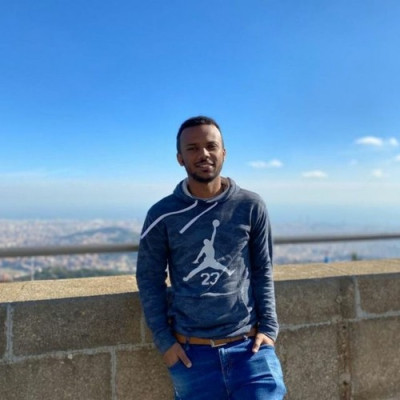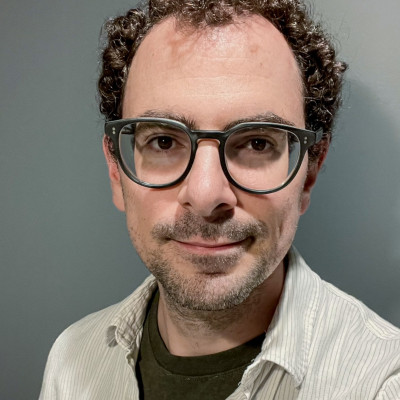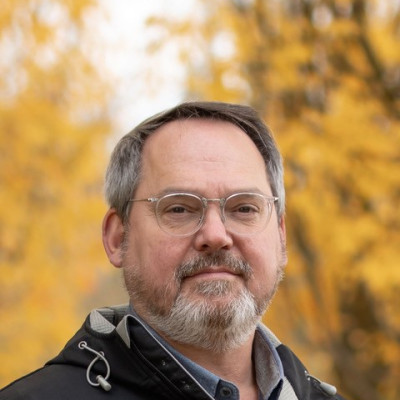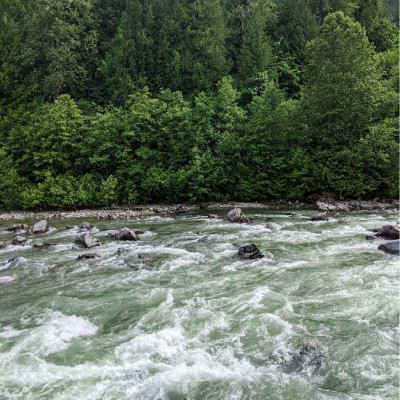News
Stay up-to-date with what's happening in EOAS
Meet Lualawi Mareshet Admasu - Atmospheric Scientist
Lualawi Mareshet Admasu is a PhD student of Atmospheric Sciences working at University of British Columbia. Currently, he is investigating why the Arctic region warms faster than other parts of the world under global warming and its effects on weather systems. Most of his work involves analyzing climate data from model outputs and observations. He also runs climate models to study how weather systems behave in response to the rapid warming of the arctic using idealized experiments. Before coming to UBC, Lualawi did his undergrad in Civil Engineering at Addis Ababa Institute of Technology in Ethiopia and later obtained his master’s in water resources engineering at KU-Leuven in Belgium.
Meet Dr. Scott Blumenthal - Paleoecologist
Scott uses stable isotopes to study the evolution of mammals and terrestrial ecosystems, with a particular interest in human origins research in Africa. His research is focused on applying and developing isotopic proxies for investigating mammal diets, terrestrial vegetation, and climates in the fossil record. He also conducts isotopic studies of modern mammals, soils, plants for studies of the ecology and conservation of modern mammals and ecosystems as well as providing a foundation for paleoecological research. He is also involved in studies of the evolutionary history of mammals over the Cenozoic, as well as the archaeology of prehistoric foragers and early food producers.
Dr. Greg Dipple talked about the need to green mining operations on CBC
Dr. Greg Dipple, EOAS professor and founder of Carbin Minerals, which won $1 million from the Carbon Removal Xprize a few months ago, was recently interviewed on CBC. Dr. Dipple talked about the idea of turning waste from nickel mines, a key element of electric vehicles, into large-scale carbon sinks. His approach would “use the tailings — pulverized rock byproduct that comes from extracting metals and minerals from ore — as a giant sponge for carbon in the atmosphere”. Once absorbed, the carbon would become rock and be removed from the atmosphere permanently in a process known as carbon mineralization.
"We can see a pathway towards nickel mining in the future where it produces a net positive environmental benefit from the context of greenhouse gases," said Dr. Dipple on CBC. However, he also pointed out that projects like his should be the "last thing" mining companies do. Instead, he suggested companies opting to green their operations more holistically, such as using renewable electricity and decarbonizing the haul fleet. “You look at all your operations, you make it as low carbon as you can and then the hard to abate … you take care of with your tailings," he said.
Learn more:
Dr. Greg Dipple's interview with CBC
Carbin Minerals founded by EOAS scientists wins $1 million from the Carbon Removal Xprize funded by the Musk Foundation
Resilient rivers: Glacier controls of post-heatwave river flows in British Columbia
One year after after an unprecidented heat dome siezed southern BC, PhD candidate Sam Anderson shares his research on post-heatwave streamflow in glacier- and non-glacier fed rivers.
Lessons from Glaciers: EOAS PhD candidate publishes opinion piece in the Globe and Mail
"What we observed during and after the heat wave in June 2021 underscores this fundamental truth about life in Western Canada: ice matters" writes EOAS PhD candidate Sam Anderson in an opinion piece published in the Globe and Mail on Saturday.
Anderson studies how climate-induced glacier melting impacts streamflow in Western Canadian rivers, and what the loss of glacier ice means for community water supplies. The heat wave, which ravaged Vancouver almost one year ago to the day, was an uncomfortable reminder of the significance of his research.
“Glaciers played an important role in determining how rivers fared both during last summer's unprecedented heatwave, and also in the hot and dry months that followed” says Anderson. Streamflow in rivers fed by glaciers remained within a normal range, compensating for the otherwise dry conditions through enhanced glacial melt, whereas rivers fed only by snowmelt dwindled and dried up. However, the resilience of water supplies provided by glaciers is no given; climate change is altering this dynamic.
“As the ice disappears, so does its ability to act as a buffer to the extremes of our times, and we are barrelling toward a less familiar, less stable and less resilient future because of it”
Anderson’s research, which uses a mixture of historical stream data and deep learning techniques to model regional streamflow, identifies communities whose water supplies are endangered due to the effects of climate change. Identifying communities at risk is a first step toward planning for a stable and resilient water supply in the future.
In his Globe and Mail piece, Anderson outlines another key step. “Talking about climate change with friends, neighbours, leaders and family, as simple as it seems, is an essential action” – one that Anderson takes to heart. He was a recent participant in the Climate Crisis Colloquium Series held at the department this January, a guest on the department podcast On Earth, and often shares videos describing his research and the lessons that glaciers offer us about stability and resilience.
Meet Alexis Bahl - Oceanographer
A. Bahl is a Ph.D. candidate in the Earth, Oceanic, and Atmospheric Sciences Department at the University of British Columbia. Her dissertation, “An improved understanding of Salpa thompsoni diel vertical migration and its influence on Southern Ocean ecosystem structure and function” examines the behavior of one of the most abundant zooplankton species in the Southern Ocean with an effort to interpret its importance on fisheries management and biogeochemical processes. Her motivation to address policy with science is supported by her active role in the Integrating Climate and Ecosystems Dynamics (ICED) in the Southern Ocean and the United Nations Southern Ocean Task Force working groups where she organizes workshops, leads report drafting, and manages research projects for policy stakeholder use. Previously, she worked at the Earth and Planetary Sciences Department at Johns Hopkins University where she conducted research on ocean mixing uncertainty in earth system model climate projections. Alexis also served as the Coordinator of the National Geographic Society’s Perpetual Planet program. She has an M.Sc. in Environmental Sciences and Policy from Johns Hopkins University and a B.Sc in Environmental Science from Loyola University Chicago.





